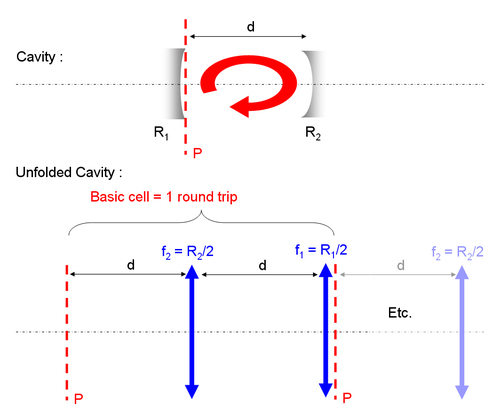
Periodical structure of laser cavities
Let us consider the cavity described in figure 1. An optical ray bouncing back and forth in this cavity could be “unfolded” along the z axis. In other words, the light trajectory could be seen as a series of one-way paths from M1 to M2 then from M2 to M1 etc. To do that, we only need to replace the mirrors (with radii of curvature Ri) by lenses (with focal lengths fi=Ri/2 – see a basic course about ray optics)
The structure equivalent to a two-mirrors linear cavity is then a periodic structure made of a series of lenses spaced by the distance d (see figure 4)

We can then intuitively figure out what is the stability of the cavity : if after passing through the series of lenses the rays remain in the vicinity of the optical axis, the cavity will be stable. If not, the cavity will be unstable.